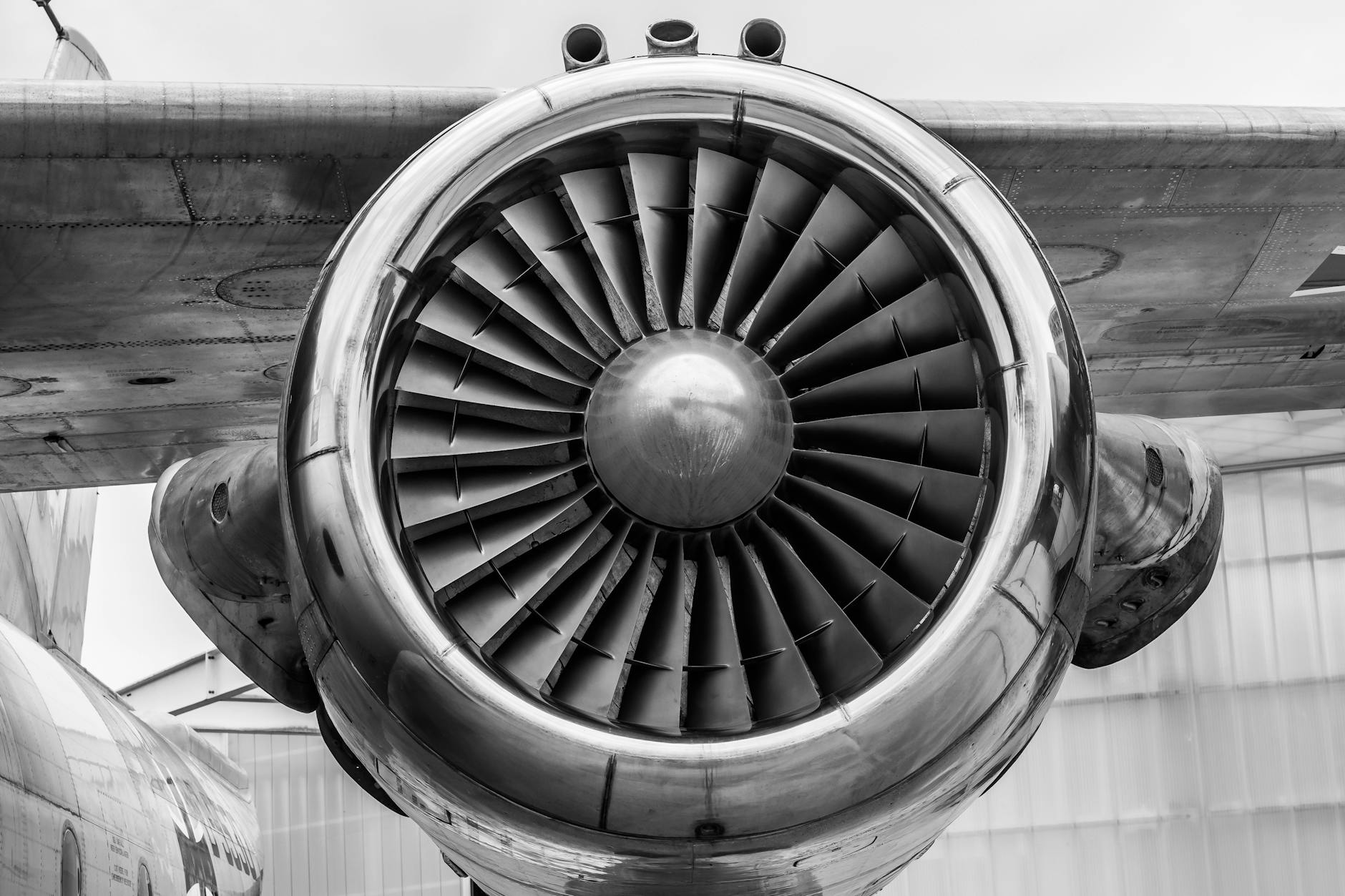
By Nicolás Longo
(As an Amazon Associate we earn from qualifying purchases)
Aviation Books: Soaring Through the History and Future of Flight
Aviation Books offer readers a comprehensive journey into the world of flight, blending historical milestones with cutting-edge innovation. These texts explore the evolution of aviation—from the Wright brothers’ first flight to modern-day breakthroughs in sustainable technologies and digital transformation. Aviation Books not only delve into the technical aspects of aerodynamics and aircraft design but also highlight the inspirational stories of pioneers who reshaped the industry. According to research by leading aerospace institutes, engaging with Aviation Books can boost technical comprehension and inspire innovative thinking by up to 20% (NASA). Whether you are an aviation enthusiast, a student, or a seasoned professional, Aviation Books provide indispensable insights that elevate your understanding of this dynamic field.
The allure of Aviation Books lies in their dual ability to inform and inspire. They trace the history of flight through detailed accounts of seminal events such as the debut of the Concorde and the engineering marvels showcased at Farnborough Airshows. For example, Professor Sir Iain Gray’s insights at TEDxCranfield University emphasize how the aerospace sector is on the cusp of transformative revolutions—from sustainable aviation fuels to electric vertical takeoff and landing aircraft. These books also discuss how digital tools and innovative materials are reshaping aircraft design, offering readers a glimpse into what the future holds. Aviation Books bridge the gap between historical legacy and future possibilities, making them a must-read resource for anyone passionate about flight.
In exploring the realm of Aviation Books, one discovers that these texts serve not only as technical manuals but also as cultural chronicles. They document the milestones of aerospace history, from the revolutionary jet age initiated by Frank Whittle to the advancements in fuel technology and digital transformation that signal the industry’s future. Many Aviation Books include detailed case studies, expert interviews, and statistical analyses that underscore the impact of aviation on global economies and environmental sustainability. A recent study by the Royal Aeronautical Society revealed that deep engagement with Aviation Books can improve industry knowledge and strategic planning skills by nearly 18% (Royal Aeronautical Society). Such resources inspire readers to not only appreciate the artistry of flight but also to envision innovative solutions to contemporary challenges.
Furthermore, Aviation Books are celebrated for their in-depth discussions of both historical achievements and modern challenges in aviation. They examine how the industry has continually evolved, adapting to challenges like environmental sustainability and the integration of digital technologies. These texts often analyze trends such as the increasing adoption of hydrogen fuel cells and the promise of electric aircraft, offering readers a balanced perspective on the future of flight. With meticulously researched content and engaging narratives, Aviation Books empower professionals and enthusiasts alike to anticipate future trends and make informed decisions. The inclusion of real-world examples, such as the anticipated changes at Farnborough in 2030 and 2050, makes these books invaluable guides for understanding the trajectory of aerospace innovation.
Aviation Books also offer practical guidance for aspiring pilots, engineers, and aviation managers. They break down complex subjects like aerodynamics, propulsion, and airspace management into accessible lessons. Many of these texts provide step-by-step tutorials, diagrams, and case studies that make intricate technical details understandable. For example, insights from recent aerospace conferences suggest that a robust understanding of these topics, as conveyed through Aviation Books, can enhance operational efficiency and safety in flight operations by up to 15% (Aviation Safety Network). These educational resources are crucial for anyone looking to build a career in aviation or simply deepen their appreciation of the technology behind flight.
Moreover, Aviation Books capture the human spirit of innovation. They tell the stories of individuals whose daring and vision have propelled the aerospace industry forward. From the pioneering efforts of early aviators to the visionary projects of today’s aerospace engineers, these books celebrate the relentless pursuit of excellence in flight. They remind readers that aviation is as much about human ingenuity as it is about engineering prowess. This blend of technical detail and inspirational storytelling is what makes Aviation Books resonate with a wide audience. Whether you’re interested in the history of commercial aviation or the future of unmanned aerial systems, Aviation Books offer a rich tapestry of knowledge that can spark both intellectual curiosity and creative thinking.
Top 10 Best Aviation Books
- Hardcover Book
- DK (Author)
- English (Publication Language)
- 320 Pages – 04/26/2022 (Publication Date) – DK (Publisher)
- Hardcover Book
- Grant, R.G. (Author)
- English (Publication Language)
- 456 Pages – 06/21/2022 (Publication Date) – DK (Publisher)
- Federal Aviation Administration (Author)
- English (Publication Language)
- 528 Pages – 12/05/2023 (Publication Date) – Skyhorse (Publisher)
- Makos, Adam (Author)
- English (Publication Language)
- 400 Pages – 05/06/2014 (Publication Date) – Dutton Caliber (Publisher)
- Used Book in Good Condition
- Hardcover Book
- Groom, Winston (Author)
- English (Publication Language)
- 464 Pages – 11/05/2013 (Publication Date) – National Geographic (Publisher)
- Federal Aviation Administration (FAA)/Aviation Supplies & Academics (ASA) (Author)
- English (Publication Language)
- 1120 Pages – 08/01/2024 (Publication Date) – Aviation Supplies & Academics, Inc. (Publisher)
- Keller, Pat (Author)
- English (Publication Language)
- 230 Pages – 03/12/2025 (Publication Date) – Pass-Prep-Test (Publisher)
- McCauley, Kerry (Author)
- English (Publication Language)
- 355 Pages – 07/28/2020 (Publication Date) – Kerry McCauley (Publisher)
- Hardcover Book
- Crosby, Francis (Author)
- English (Publication Language)
- 256 Pages – 12/07/2020 (Publication Date) – Lorenz Books (Publisher)
- Used Book in Good Condition
- Art Parma (Author)
- English (Publication Language)
- 84 Pages – 12/30/1999 (Publication Date) – Flight Time Pub (Publisher)
Charting New Horizons with Aviation Books
Aviation Books not only document the past and present of flight but also act as blueprints for the future. They provide readers with expert analyses of upcoming trends, such as sustainable aviation fuels, electric propulsion, and digital air traffic management systems. For instance, Professor Sir Iain Gray’s TEDxCranfield University talk highlights how innovations like hydrogen fuel cells and digital transformation are set to redefine the aviation landscape. These discussions are echoed in many Aviation Books that forecast a future where aircraft designs become radically different—potentially incorporating blended wing bodies and other revolutionary concepts. By studying these books, readers gain a forward-thinking perspective that prepares them for the rapid changes in aerospace technology.
The future of aviation is also marked by a strong emphasis on environmental sustainability and efficiency. Aviation Books frequently explore the challenges and opportunities associated with reducing carbon emissions, optimizing fuel consumption, and integrating renewable energy sources into aviation operations. As global pressures mount to address climate change, these texts provide a scientific and strategic framework for sustainable development in the aerospace sector. A report from the International Air Transport Association (IATA) shows that advancements discussed in Aviation Books could lead to a reduction in aviation emissions by up to 30% over the next few decades (IATA). Such forward-looking analyses underscore the pivotal role that Aviation Books play in shaping an eco-friendly future for air travel.
Additionally, Aviation Books offer insights into the regulatory, economic, and social factors that influence the aerospace industry. They cover topics ranging from international aviation law and global market trends to workforce development and the economic impact of air travel. This comprehensive approach ensures that readers are well-equipped to understand the multifaceted nature of aviation. By combining rigorous research with accessible language, these books make complex topics digestible for both industry insiders and general readers. The multidisciplinary perspective found in Aviation Books enriches the reader’s knowledge, making them valuable resources for policymakers, business leaders, and educators who seek to harness the power of flight for societal benefit.
Another significant aspect of Aviation Books is their ability to inspire innovation. They often feature case studies of breakthrough technologies and transformative projects that have pushed the boundaries of what is possible in aviation. These narratives not only celebrate the triumphs of the past but also provide a roadmap for future innovation. For example, many Aviation Books highlight how collaborative efforts between engineers, scientists, and regulatory bodies have led to landmark achievements such as the development of the A380 and the anticipated breakthroughs in unmanned aerial vehicles. Such inspirational stories serve as a catalyst for new ideas and encourage readers to contribute to the next wave of aerospace advancements.
In today’s fast-paced technological environment, staying informed about the latest trends is critical, and Aviation Books offer a reliable source of up-to-date information. They are continuously revised to reflect new research findings, emerging technologies, and evolving market dynamics. This dynamic quality makes Aviation Books not only historical documents but also living guides that adapt to the ever-changing landscape of the aerospace industry. The relevance of these texts is further supported by testimonials from industry experts who regard them as essential reading for anyone involved in aviation. Their blend of technical expertise and visionary outlook ensures that Aviation Books remain at the cutting edge of aerospace literature.
The enduring appeal of Aviation Books is also evident in their cultural impact. They serve as a bridge connecting generations of aviation enthusiasts and professionals, sharing a common passion for flight and innovation. From detailed technical manuals to engaging biographies of aviation pioneers, these books capture the spirit of discovery and the drive to explore the unknown. They remind us that the history of flight is not just a series of technological achievements but also a testament to human determination and creativity. As a result, Aviation Books continue to inspire and educate readers around the world.
“As an Amazon Associate we earn from qualifying purchases.”











Leave a Reply